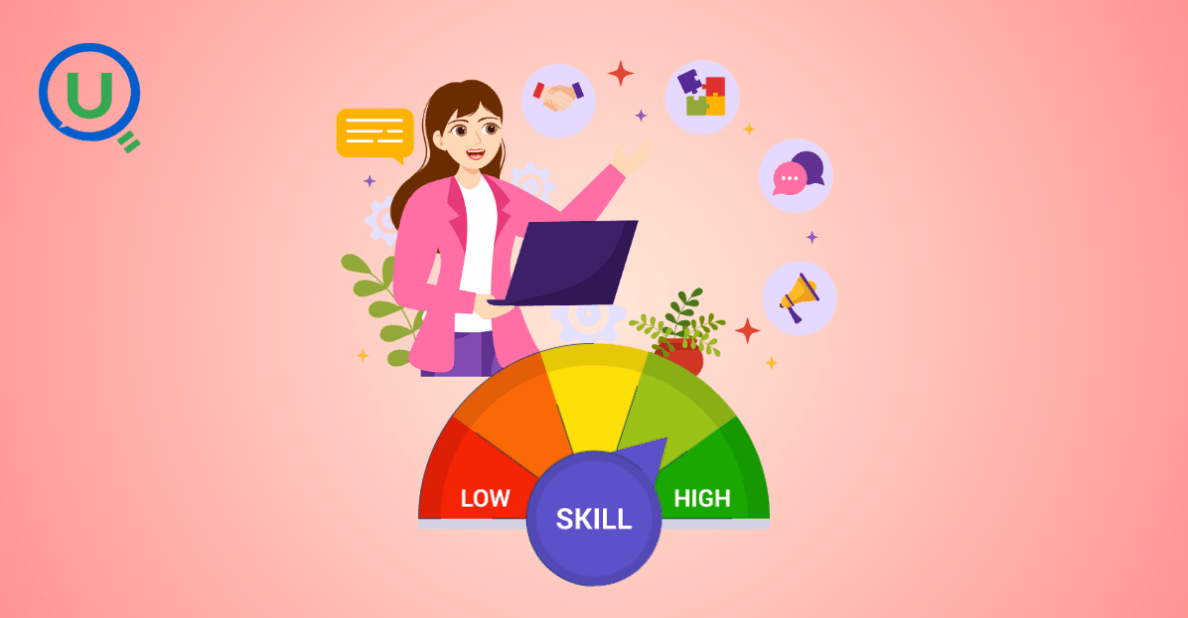Nurturing the Self Driven Learner

Ready to transform your data strategy with cutting-edge solutions?
Self directed learning or Self learning in short, is a time tested, proven way to learn just anything out there.
It is one skill or trait abundantly found in some of the greatest problem solvers in the world like Leonardo Da Vinci, Steve Jobs, Elon Musk and many more.
Try a sneak peek into the modern Knowledge economy and you'll witness the frantic pace at which technology is changing businesses around. This also means that the skills required to design, deliver, maintain and improve industry grade solutions are ever changing. No amount of curriculums, courses or classrooms will ever be able to impart required skills to solve real world problems.
This means there is a high chance of you facing unknown problems when you are on the ground, building solutions for your customers.
Real world problem solving requires non-linear combination of skills such as : critical thinking, first principles thinking, reading comprehension, researching, questioning, (Google/chatGPT), collaboration, problem breakdown, data analysis, synthesis and presentation.
Not surprisingly, these are the exact set of skills which the knowledge industry cares for and are ready to pay a premium for.
And why not?
There are few traits of self driven learners which makes them stand apart -
High degree of curiosity
Humility
Integrity
Persistence
Hard work
And this combination is exactly the reason such people are rare to find. With college graduates its an enormous scarcity the whole knowledge industry is struggling to cope up with.
Pick any firm which works in Consulting/Analytics/Startups space. Most of them work in an unstructured, siloed, vague problem statements which first need to be synthesized, structured, presented well and signed off from stakeholders. And that too, first as an IC (Individual Contributor) and then as a Team Collaborator(TC).
On the flipside when we look at majority education institutions, the learning is heavily instructor led where there is mostly a "lecture" with one directional flow of information loaded heavily with facts and figures.
With no motivation around what to do with the flurry of knowledge, a college goer stops associating with a the problem and simply becomes an exam passing machine.
On the other hand the moment a fresh graduate enters the work environment, he/she is in for a rude shock.
The industry is all about solving problems in front of you with whatever limited resources you have. You may be limited in knowledge, team mates, budget, client expectations etc. How do you deliver with top most quality under such constraints?
With suddenly the cushion of somebody "telling you what you should know to solve problems" pulled off, fresh graduates are caught off-guard with no clue of how to tackle real world problems
This leaves the firms hiring them stare at a big question -
With the education system failing to enable the transition from formal learning mindset to a self learning mindset, what can the L&D do to groom self learners?
Well, the industry has tried many strategies for decades.
Classroom based learnings - The idea was borrowed from colleges as it was most familiar and most convenient. However, it's not always the most effective one when it comes to learning unstructured problem solving. The reason being the learners are tuned to pedagogical ways of learning which is centered around the teacher and not the learner.
MOOCs - Massive Online Open Courses brought a ray of hope with a lot of structured content from the best of the universities brought to the fingertips of the learners. This also revolutionized the world of Edtech. However, this too failed to drive self learning which is strange because the whole idea of MOOCs was to enable self learning. The paltry completion rates of 5-7% are the testimony of limited on-ground success of MOOCs
Gamified Learning portals - Platforms like Hackerrank, HackerEarth, LeetCode, Kaggle have brought a lot of charm of self learning back with enabling people to play around with problems and work them out in a convenient no fuss environment. However, this model of learning had one problem : Real Industry Problem complexity and uncertainty. These two traits make a problem statement truly "real world"
The result? A rising Talent Debt.
Delivery teams complain of employees not demonstrating problem solving skills even after the best possible learning opportunities provided. One thing they can't compromise after ingesting the talent is quality
With the company investing huge sums into upskilling their employees, the clock starts ticking in terms of how soon the fresh graduates convert from liabilities to true assets.
In short, it's about both relevance as well as pace of learning
So, what are the choices left for an L&D Professional who is tasked with the responsibility of building the organization's talent pool of self learners growing to become problem solvers and hence become an asset to the company?
At Enqurious, we have been thinking, designing, experimenting and implementing solutions addressing this pressing pain point of L&D teams. We've kept a fancy name to it : The 4D Framework. It stands for :
Design - We empower L&Ds to take charge and help them design their programs based on skill personas. A skill persona is simply a skill graph of interconnected skills. Our skill personas are well researched and highly flexible. It can always be tweaked to fit the skilling needs of the organization.
Deliver - With a suite of tracking, reporting and analysis tools, we ensure L&D Ops teams have sufficient visibility into the progress of learners. Our platform also offers an "Early Warning System" spotting learners at risk.
Discover - Discovery of talent (good or not so good) has been an Achilles Heel for L&Ds. Getting answers to critical questions like :
Who all are our top talent?
Who needs help?
Are we equipped enough in terms of hot skills?
Do we sufficient talent to cater to the upcoming demand?
Leverage our Skill Insights Engine to fetch answers to these questions and many more to drive efficient L&D Ops
Deploy - It all culminates to one thing : Deploying talent to work. Delivery teams need to have clear visibility of the talent pool and the ease of picking up talent on demand. This also offers the much needed feedback loop where L&Ds get to know from delivery teams the points of improvement in design and delivery of learning
Explore how Enqurious helps groom self driven learners through a combination of Masterclasses and scenario driven problems.
Ready to Experience the Future of Data?
You Might Also Like

A complete guide to building a future-ready L&D team in 2025. Explore the roles, skills, structure, and AI-driven strategies that drive real business impact.

Learn how to bridge the digital skills gap with effective upskilling strategies. Discover how to foster a culture of continuous learning, personalize training with AI, and focus on future-ready skills.

Discover 5 key strategies to overcome upskilling and reskilling challenges in the age of AI. Learn how to build a future-ready workforce with personalized learning, cross-functional collaboration, and real-world application.

Explore the key differences between LXP and LMS platforms and learn which is best for your business in 2025. Discover how AI-driven learning systems can boost employee engagement and upskill your workforce for the future.

Discover 6 powerful ways to upskill employees and future-proof your workforce in the age of AI and data. Learn how leading organizations are adapting learning strategies to stay ahead.

Explore the difference between reskilling and upskilling and why it matters for career growth and organizational success. Learn how reskilling helps workers pivot to new roles and how upskilling enhances current skills to stay competitive in today's fast-changing job market.

Explore the 6 core adult learning principles and how they can transform your training programs. Learn how to apply these principles for better engagement, retention, and real-world application, ensuring meaningful learning experiences for adult learners.

Discover the 9 key components of an effective learning experience and how they drive better engagement, retention, and real-world application. Learn how organizations can implement these elements to create impactful learning journeys.

Boost your Business Intelligence skills in 2025 with 25 hands-on exercises that cover data analysis, visualization, SQL, and more. Perfect for professionals looking to sharpen their BI expertise and stay ahead in the competitive job market.

Learn about Learning Management Systems (LMS), their key benefits, and popular examples like Moodle, Google Classroom, and Enqurious. Discover how LMS platforms are revolutionizing education and training for businesses and schools.

Discover how AI is transforming workplace learning and development by personalizing training, delivering real-time feedback, and aligning learning with business goals to drive workforce excellence and growth.

Discover why a Capstone Project is essential in 2025. Explore how it bridges the gap between theory and practice, enhances problem-solving skills, provides industry experience, and prepares students for real-world challenges. Learn how capstone projects are shaping future careers.

In today’s rapidly evolving job market, the value of evidence-based skills has never been more critical. As industries shift and technology transforms how we work, the need for tangible proof of competencies has become paramount.

In today’s rapidly evolving technological landscape, one skill stands out above all others: learnability. Learnability, often described as the ability to continuously acquire new skills and adapt to change, is no longer just an advantage but a necessity.

To build a future-ready workforce, companies need to rethink talent strategies. Start by developing a data-driven talent system to align key roles with best-fit talent. Invest in AI training now to stay ahead, and shift hiring practices to focus on skills, not just job titles.

At Enqurious, we understand the importance of empowering workforces with the right skills to navigate emerging challenges. Enqurious works as a strategic partner to supplement and enhance L&D Teams.

Understanding how variables work together can supercharge your marketing strategy.

Marketing Effectiveness: Strategies, Channels, and ROI Maximization

The transformative journey of the energy sector: from outdated practices to a data-driven revolution.

Enhancing Readability for Effective Learning and Development

This guide helps to understand what elements come together to make or break a visual

Thoughtfully crafted instruction design with drops of ambiguity and room for creative thinking makes the learning experience more enjoyable and “real world”.

Even after putting the best of the content, infrastructure and people, the gap between the intention of organizations to foster a culture of learning and the actual implementation and adoption of learning initiatives by employees keeps on widening.

Leveraging data to design better and efficient L&D strategy for organization success
